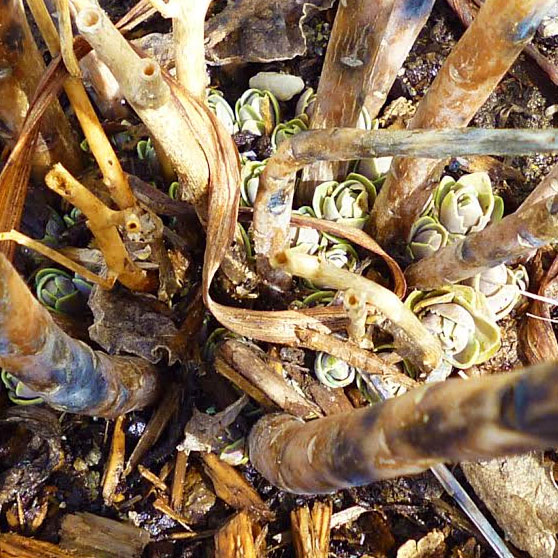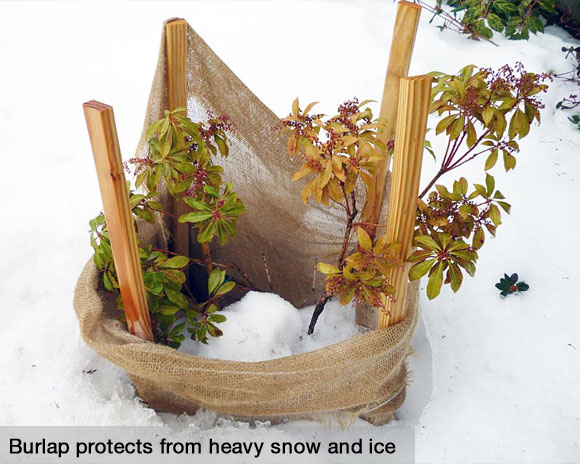Though we are seriously tired of looking at all this snow, the promise of spring is just around the corner as the mountains of white begin to melt. Gardeners are itching to get out and dig around, see what’s coming up, start making plans. What do you think they’ll find?
Though it seems hard to believe, snow is beneficial to our plants, shrubs, and trees. Not only does snow replenish the soil with moisture, but snow has great insulation properties that slow down the loss of heat from the ground. In an ideal winter, our plants have gone dormant long before the ground begins to freeze. Followed by a comfy blanket of snow, this frozen soil remains right around 32 degrees, and those plants and shrubs have a long rest before they’re required to perform again. This should cheer you up: most, if not all, of your plants have survived.

As the sun melts patches of snow off the landscape beds, we see the small green nubs of things poking through the soil. Daffodils, crocus, snowdrops. Maybe even some hyacinth. Some of the hardier perennials such as iris and stonecrop might also appear. Some herbs such as cilantro and thyme fared well under the snow. If you look carefully where your peony bloomed last year, you’ll see the small red spears pushing through. And, of course, close inspection of some early trees shows the swell of buds.
What garden chores can be performed in the March Connecticut garden? Unfortunately, not too many. Resist the urge to remove leaves or mulch from perennials and shrubs, unless we get a long warm spell. There are still a few weeks before we can safely believe that we are freeze-‐free, so be prepared to cover tender new growth if you’ve removed the protective layers. Though late March is usually the time to sow early seeds such as peas, or plant pansies, if your soil is heavily saturated with the melting snow, disturbing it will only form compacted clumps to deal with later.
One issue to address is ice and heavy snow damage to shrubs and trees. This would be a good time to assess each one. If snow remains on branches, do not knock it off. Branches are flexible and will gradually return to their original shape if allowed to do so as the snow melts. Removing the snow all at once can cause them to snap back and break. (Ideally, young newly-‐planted shrubs should have been wrapped in burlap in December to help them through their first winter.)

Something else we’ll also see emerging from the snow cover are the winter perennial weeds, such as hairy bittercress, henbit, purple deadnettle, and chickweed, those pests that seem as though they actually continued to grow under the snow. They begin to bloom and set seed by late March, so the earlier you pluck these weeds from your gardens, the less you’ll have to deal with them when the weather warms.
Wave goodbye to Old Man Winter and think about all those beautiful growing things that will make life beautiful again in just a few weeks.
 This article and photographs were provided by Toni Leland, a Connecticut freelance writer and Master Gardener in southeastern Connecticut. She is available for assignment on a wide range of subjects: travel, history, nature, gardening, wildlife, cooking, writing, horses, and outdoor living to name a few.
This article and photographs were provided by Toni Leland, a Connecticut freelance writer and Master Gardener in southeastern Connecticut. She is available for assignment on a wide range of subjects: travel, history, nature, gardening, wildlife, cooking, writing, horses, and outdoor living to name a few.
Toni’s fiction has appeared in several anthologies, magazines, and various writing newsletters,and she keeps up with the writing community through her Facebook page, as well as membership in Sisters In Crime and Connecticut Authors and Publishers Association.
Visit her website www.tonileland.com and contact her by email for further information.
